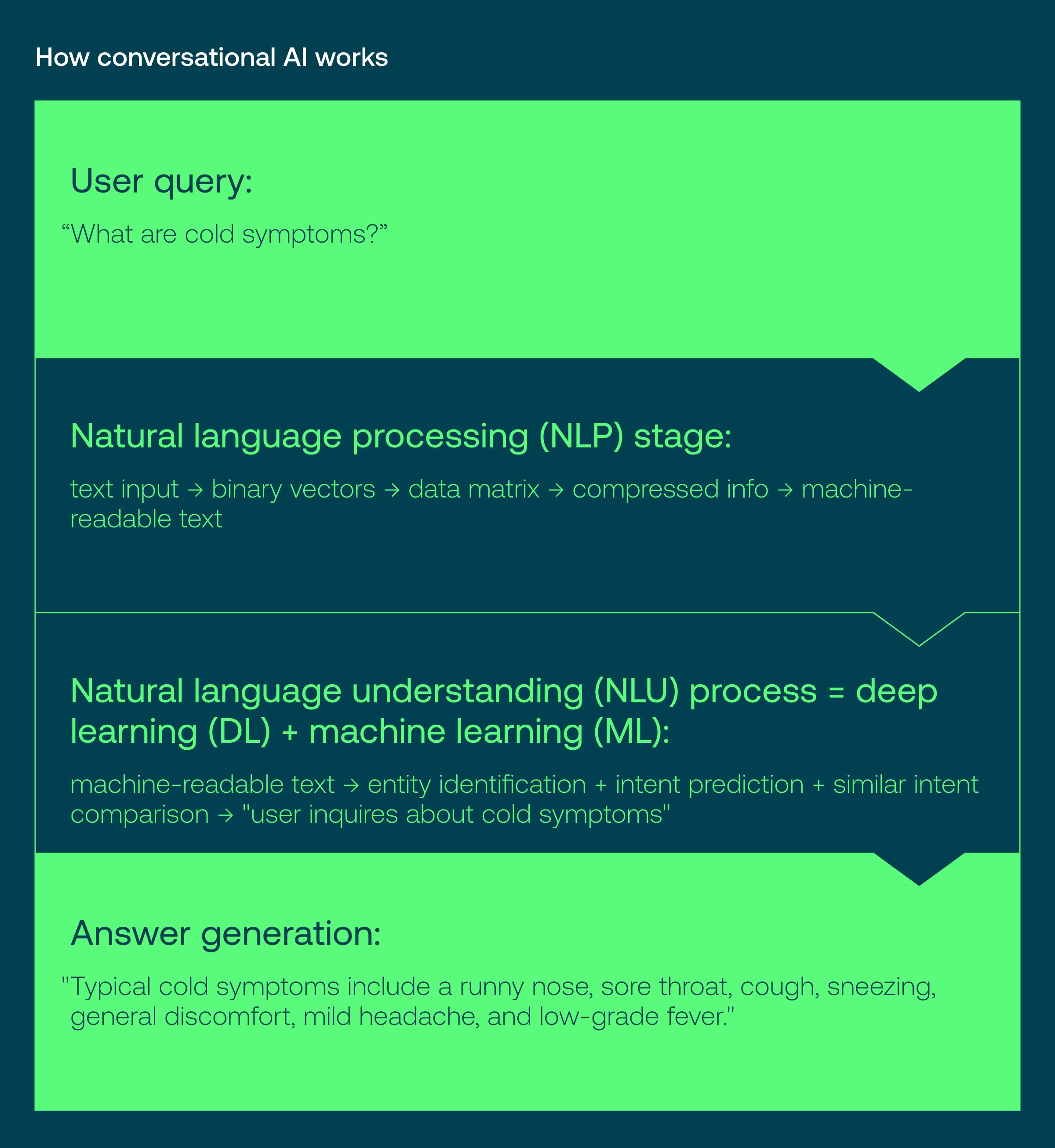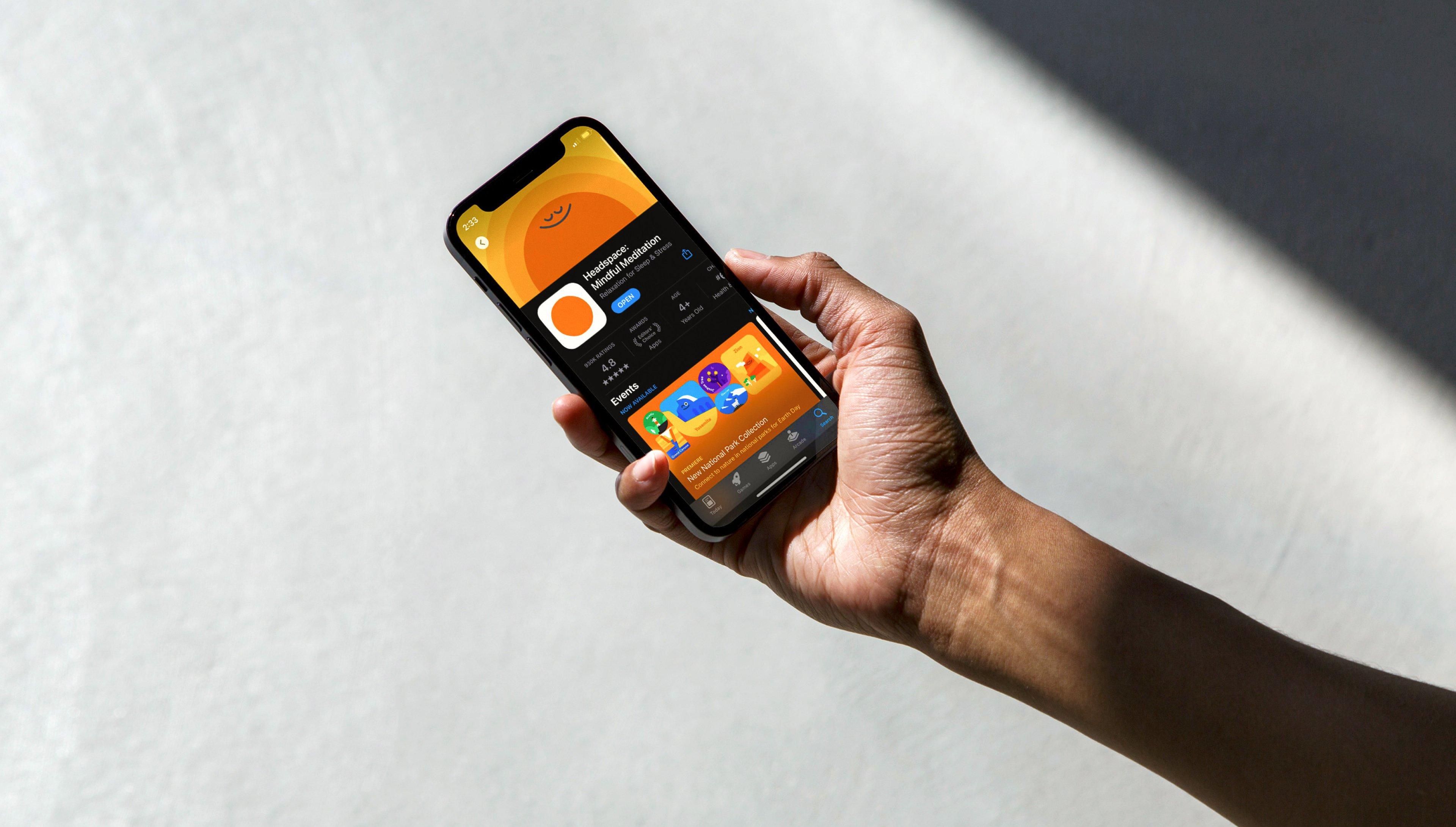
The power of conversational AI in healthcare


According to the Association of American Medical Colleges, the US could be down by 124,000 physicians by 2034 . . . and that alarming shortage is on top of the existing need for 17,000 primary care physicians, 12,000 dentists, and over 8,000 therapists.
While this is a complicated problem rooted in the needs of an aging population, the fact that the existing physician workforce is of retirement age, the prevalence of chronic conditions, and the expense of medical school, advanced technologies could make an enormous difference. Indeed, a new report by experts at McKinsey and Harvard states that artificial intelligence technologies like machine learning (ML) and natural language processing (NLP) can potentially save the American healthcare system up to $360B.
Conversational AI platforms also show promise, especially in light of their recent successes in mental health treatment. Still, even though the latest ChatGPT version aced the US medical licensing exam (yup, "better than many doctors"), let's not celebrate just yet: There’s still plenty of concern that conversational AI is still maturing and simply not ready for direct, hands-on patient care.
Therefore, it's vital to focus on what can actually be done now.
The nuts and bolts of conversational AI for healthcare
Conversational AI refers to technologies designed to understand and generate a human-like, context-aware dialogue with users. In healthcare, AI is commonly used in chatbots, voice assistants, and advanced interactive platforms to facilitate appointment scheduling, customer service, and diagnostic assistance.
These technologies go far beyond our old friends Siri and Alexa. While handy for making calls and sending texts, legacy voice assistants are stuck in their ways when it comes to real conversations. They operate via rigid, pre-set rules, which limits their adaptability and responsiveness in complex dialogue scenarios.
In contrast, conversational AI platforms don’t just read from a script — they’re good improvisers. A blend of NLP and ML gives AI chatbots the chops to understand human speech, mimic our way of talking even in unexpected conditions, and enhance the interaction experience over time.

How conversational AI in healthcare works
Think of conversational AI for healthcare unfolding in three steps:
Step 1: Initial processing of the query and setup
Imagine telling an AI chatbot that you think you might have a cold and want to get a symptom list to assess your condition.
First off, NLP transforms your query into a format the virtual assistant can digest. Your question is converted into unique codes, or binary vectors, that capture the essence of each word; these codes are then put together in a matrix representing the entire sentence. Then the system simplifies the blueprint, keeping only the most important bits to make a guess at what you’re asking.
Step 2: Natural Language Understanding
After the initial setup, deep learning and machine learning models come into play. Grouped under the umbrella term natural language understanding (NLU), these technologies help the bot pinpoint the topic of the user request. NLU achieves this by analyzing entities that belong to the same category (think cold-related terms like "cough," "sneezing," or "rhinitis").
Next, the system examines different expressions of the same intent, like "What are the symptoms of a common cold?" and "How do you feel when you have a cold?" Through this in-depth analysis, the system fully grasps the specific information the user is seeking.
Step 3: Response
The virtual assistant generates a more personalized response, tapping into its extensive answer library created in the previous step. Each new question fine-tunes the machine's ability to recognize different variations of intents and sets the stage for increasingly accurate responses in future interactions.

Both the query and the response can come in different formats — text or voice — depending on the conversational AI in healthcare solution in use. These products include:
- AI customer support chatbots
- Virtual assistants integrated into smart devices
- Text-to-speech AI applications
- Speech recognition software
- Generative AI agents capable of advanced text and voice dialogues
Conversational AI in healthcare: examples and benefits
While general-purpose AI has already cemented its role as a trusted 'second opinion' in diagnostics — check out how it beats doctors at breast cancer detection — it’s far from monopolizing the healthcare tech conversation. Conversational AI for healthcare systems are increasingly finding their way into various medical roles, taking on everything from record management to staff training and patient consultations.
Smart EHRs
The sobering 2023 figures reveal that over half of physicians grapple with depression and burnout. What’s to blame? Often the never-ending obligation of electronic health record (EHR) management that can consume evenings reserved for family and relaxation.
But the reality is most doctors see an average of 20 patients — each one with particular details that should be recorded — in a typical eight-hour shift, leaving little time during those eight hours for thorough record-keeping.
That’s where conversational AI for healthcare swings into action. It summarizes, organizes, and tags conversations between doctors and patients so both parties can revisit the records whenever needed. After a little touch-up of the AI-generated notes, medical professionals can wrap up their daily documentation in as little as 20 minutes.
Check out Suki (“the only AI voice assistant for healthcare”), which has thus far received $95M in funding, for a great example of how automation can lift the bureaucratic aspect of medicine from clinicians. The tech listens to doctor-patient interactions in real time and auto-generates clinical notes within seconds — all with 99 percent accuracy and zero human supervision.
Another noteworthy name in the field is Nabla Copilot (“Enjoy care again”), a Paris-based startup that promises to save doctors 40 percent of their daily documentation time. The company is the first to use GPT-3, the tech behind ChatGPT, to translate verbal interactions into essential documents like prescriptions, referral letters, and consultation summaries.
Consider also DeepScribe (“Be a doctor. Not a scribe.”). This medical transcription platform trims documentation time by 75 percent and allows doctors to see an extra couple of patients daily. Even more impressive, the solution is savvy enough to decode the intricacies of non-linear conversations, fully grasping their context, semantics, and deeper meanings. (The company’s own data suggests that DeepScribe outperforms GPT-4 by a whopping 32 percent on AI medical scribing.)
Chatbots for consultations
Googling symptoms can mess with your mind by setting off false alarms, but it also leads to unnecessary appointments. A great alternative would be an AI chatbot powered by credible data for a more spot-on health assessment.
A perfect example? Our unicorn client K Health (“Check your symptoms the smart way”) offers an AI-powered chatbot that goes beyond textbook references, comparing your symptoms with real-life manifestations in other patients. This conversational AI in healthcare system has helped treat three million people so far — with medical professionals validating the AI's diagnoses 84.2 percent of the time.
Then there are (mind) game changers. Chatbots like Replika (“the AI companion who cares”) and Woebot Health (“the mental health ally”) successfully use conversational AI to lift spirits, curb anxiety, and offer a digital shoulder to lean on.
And let’s not forget the all-mighty ChatGPT. As some studies suggest that ChatGPT outperforms physicians in responding to patient inquiries, Eugene Kruglik, a healthtech delivery manager at Vention, firmly believes that adopting conversational AI solutions is vital for any healthcare institution looking to better navigate the new normal.
"Custom ChatGPT-powered platforms don’t just digitize routine tasks or communication," he says. "They can potentially serve as an always-on, go-to source of reliable information for today's digitally savvy patients, especially when global health emergencies loom large."
Simplify patient interactions, optimize workflows, and reduce costs with our conversational AI apps.
Virtual assistants
Yet, when it comes to diagnostics, ChatGPT isn’t the talk of medical offices just yet. This skepticism mainly stems from the fact that the system is trained on a wide array of text data, including books, websites, and other non-clinical texts.
But Hippocratic AI (“Do not harm”), the first safety-focused large language model (LLM) for healthcare, seems to have the solution. The company trains its LLM on vetted, evidence-based medical data, which results in more accurate diagnoses: Hippocratic AI has surpassed GPT-4 in 105 out of 114 clinical tests and certifications. What’s more, the healthtech just scored $50 million in seed (yep, seed) financing, an indicator of market validation if there ever was one.
Embedding these tailored LLMs into conversational AI solutions could streamline the identification of rare medical conditions, eliminating the need to sift through encyclopedias and other traditional reference materials. Additionally, it equips patients with the resources to assess their symptoms, determine the condition’s urgency, and choose the right physician to consult.
Staff training agents
With 53 percent of healthcare workers considering upskilling the lifeblood of their careers, conversational AI in healthcare can also become a major enabler for on-the-job training.
Take, for instance, AtroposHealth, which converts medical data into responses worthy of the most advanced scientific journals. Backed by cutting-edge AI algorithms, it offers physicians detailed answers to the most obscure medical questions and even contributes to new treatment discoveries.
Post-treatment care
Sadly, complications following hospital discharge — ranging from hospital-acquired infections to depression — are more frequent than one would hope. Since physicians may (unintentionally) neglect to follow up with former patients, conversational AI may provide an effective means to amplify post-treatment engagement and decrease readmission rates.
A great example is Navina, a Tel-Aviv startup featuring a first-of-its-kind AI assistant that helps clinicians better understand patient health status, handle administrative requests, and spot risks that require closer examination. The best part? In just a few seconds, the tool churns out a conversational, easy-to-skim response, all based on individual patient info and the latest clinical guidelines.
So, it's hardly a shocker that Navina earned a spot on the 2023 CB Insights list of the world’s 100 most innovative AI companies, sharing the spotlight with big names like OpenAI and Midjourney.
Conversational AI for healthcare is not a cure-all (yet?)
As the AI healthcare sector is projected to soar at a CAGR of 37.5 percent from 2023 to 2030, physicians should take to heart two key insights: Cutting-edge conversational AI solutions will become increasingly prevalent, and mastery of AI technology will be as essential as stethoscopes.
However, no matter how advanced AI becomes, it can't put the 'care' in healthcare quite like a human can. While AI brings analytical rigor, it lacks surgical precision in handling abnormal cases and can’t guarantee foolproof diagnoses or conduct a physical examination. Additionally, doctors bring a layer of empathy and understanding that’s irreplaceable to the healing process.
Patient data management is yet another ethical problem. “Medical data is highly sensitive, so the agenda in healthcare AI will transition from purely technical aspects to reinforcing human rights in the public health sector,” says Raman Yarash, Vention delivery manager with 10+ years’ experience in medical projects.
Raman brings up the lawsuit against Cigna Healthcare as a cautionary tale. “Just imagine: The company's AI system rejected 300K pre-approved insurance claims,” he says. “If we don't tighten up AI regulations, scenarios like this — or worse — will become increasingly commonplace."
There's a silver lining, though. Public sentiment towards conversational AI in healthcare is gradually warming up: Recent surveys suggest that nearly one-third of patients are open to AI-enabled care. This shift indicates a future where conversational AI evolves from a utility to a key player in complex healthcare processes.
"Think of AI's capability to generate healthcare research findings in seconds, a process normally requiring substantial effort from data engineers,” Raman notes. “This efficiency sets the groundwork for new medical breakthroughs that will benefit all parties involved."





